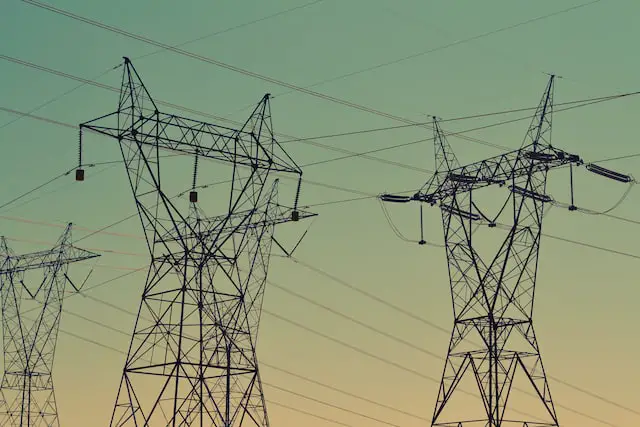
Desalination is frequently brought up in the media and touted as a solution to water shortages, although many of these projects involve government support or investment. How does desalination look as a standalone business model, can it compete in the free market or are there obstacles in its path to true profitability? I looked into the various contributing factors that influence the economics of desalination and summarized them for others with the same query.
Desalination can be a profitable business venture in areas of water scarcity with abundant salt water. The economics of desalination depends on location both from a geographical and political perspective. When the true cost of water is reflected in its price to the consumer, desalination makes economic sense.
After careful consideration, I have narrowed down five contributing factors which dictate whether desalination is a profitable business venture, or not. These 5 factors are Local energy costs, local water prices, the scale of the proposed facility, local labour, Real Estate and material costs and finally the level of local bureaucracy that needs to be overcome.
Energy Costs

Desalination is an energy-intensive process, even the most common, more efficient methods like reverse osmosis use huge amounts of electricity to drive high-pressure pumps. Depending on the size of the plant, reverse osmosis consumes between 1.8 – 4 kWh per m3 however it can take as much as 10 kWh/m3 for older less efficient facilities! For the purposes of a business model calculation, 3 kWh/m3 will be used as this represents a realistic number in the modern marketplace.
We will use California’s energy prices for the purpose of the financial model, which currently sits at around $ 0.25 USD.
Economies Of Scale

Economies of scale refer to the decrease in production cost per unit as the size of the production facility increases. In the case of a desalination plant, this refers to the reduction in the unit price of water a desalination plant can produce decreasing with an increase in its output. There are a lot of relatively fixed costs involved with desalination that become less significant of an influence on the production cost as the production output is increased. As a simplified example; Upper Management costs for a desalination plant cost 365k USD per year, this can be assumed to be similar whether the plant puts out 100 m3 per day or 100k m3 per day.
$365K USD / 365 Days = $1k USD /day
$1000 USD / 100 m3 = $10 USD / m3 in management fees for a plant producing 100m3 per day.
$1000 USD / 100k m3 = $0.01 USD / m3 in upper management fees for a plant producing 100k m3 per day.
The economy of scale in the above example shows how spreading the upper management expense across a larger production output leads to a $9.99 decrease in unit cost per cubic metre of water produced.
Although that example, is extremely simplified, the principle is applied across the board in desalination plants to things like pump efficiencies, maintenance personnel, land size and government fees etc. It makes much more economic sense to produce fewer large plants rather than many smaller plants. This exact principle leads to the construction of the largest desalination plant in the world, it simply makes more economic sense!
Local water prices

Firstly, local water prices need to represent the actual cost of the water to the environment. The actual cost of water to the environment is the price that matches its true scarcity, when water supplies are in consistent decline, that suggests the water is too cheap. Water being too cheap is a common problem worldwide as it leads to the local population using too much water which then depletes the local water resources, California is a prime example of this. When water is artificially cheap, it is hard for desalination to compete on the open market as it is not a level playing field, as is the case with California where the state is drawing excessive amounts of water from neighbouring states, contributing to record low levels in the Hoover dam & Lake Mead in neighbouring Nevada/Arizona.
Using California as an example for the local price of water, we can refer to the Nasdaq Veles California Water Index (NQH2O), where the current price is around $1000 per acre-foot which equates to $1000 / 1233.48 = 81 cents per cubic metre.
Labour, Real Estate & Material Costs
Labour, Real Estate and material costs drive the cost of the initial investment that needs to be recouped over the following years of production. The general principle here is that it is much cheaper to make a desalination plant in rural Mexico than in Manhattan Island where labour and real estate costs are astronomical. This factor is much more complicated than the initial global costs like energy and water, it also influences the economies of scale as each additional unit of capacity generally costs less to build than the previous.
For the purposes of a simple model, it probably makes sense to look at a case study as the overall initial investment cost of a desalination plant, once again using California as an example, take the Carlsbad desalination facility which cost $1 billion to construct and puts out 50 million gallons per day (190k m3).
It is estimated that the operating costs for the plant are in the area of 49-59 million USD per year, as this was an estimate from 2013 we can assume the upper end of that estimate for our calculation.
Beaurocracy
The final hurdle to overcome with any desalination plant is the government red tape, approvals, fees, inspections etc. This cost is very hard to estimate and is more of an ease of operation intangible expense in that some local governments are much more bureaucratic than others leading to the more complicated processes of attaining approval. An example of this is comparing California with Texas, with Texas being relatively friendly to development and California having much stricter regulations.
The Financial Model: Putting All The Factors Together!

Firstly we must be the key numbers on the table before we put them together.
- Cost of the plant: $1 billion USD
- The capacity of the plant: 190k m3 per day (69,350,000 m3 per year)
- Electricity used per m3: 3kWh
- Cost of electricity: $0.25 USD per kWh
- Operation costs per year: $59 million USD
Annual Electricity Use = 69,350,000 m3 * 3kWh/m3 = 208,050,000 kWh
Annual Electricty Cost = 208,050,000 kWh * $0.25 USD per kWh = $52,012,500.00
Annual Electricty Cost + Annual operating Cost = $111,012,500.00
Cost per m3 = $111,012,500.00 per year / 69,350,000 m3 per year =
$1.60/m3 ( $1,974.50 per acre foot)
Based on current factors this price of $1.60/m3 against an $0.81/m3 current water price in California would instantly mean that desalination is unviable before even looking at the initial investment cost! however, this is where the true cost of water comes to the fore.
Taking Into Account The ‘True Cost Of Water

As was previously mentioned, California’s water is too cheap which is leading to its gradual decline and worsening water issues. The San Diego Water Council (Local government) pays the Carlsbad water plant operator Poseidon drastically above the prevailing market rate for the water they produce in what is known as the “Water Purchase Agreement”. The latest available figures show an agreed price in 2017 of $2,125 to $2,368 per acre-foot which equates to $1.72 to $1.92 per m3, above the previously modelled cost for desalinated water of $1.60/m3. Due to the current inflationary environment, it is likely that these prices are now even higher, however they will be used as is for the purpose of this article.
The question this water purchase agreement price raises is, whether this increased price for desalination constitutes government support or whether this is actually the true cost of water if a balanced free market existed. It is politically unpalpable to drastically increase the cost of water at the tap, so less obvious measures like this are employed to attempt to slow the deterioration of local water sources. Now, we incorporate this agreed water price into the financial model and see whether the initial investment makes financial sense.
Assumptions for model simplicity:
- The $1 billion was borrowed at a 5% annual interest rate with a 10% principal put down.
- The required rate of return on investment is above the 10 Year Treasury Rate of 3.68%.
- Operating & electricity cost inflation is not included, and flat costs are over the investment horizon.
- The midpoint between $1.72 & $1.91 per m3 of $1.81/m3 is the assumed price received.
- Water price is considered constant over the investment horizon to counter the flat costs.
Annual Revenue = 69,350,000 m3 per year * $1.81/m3 = $125,523,500 per year
Annual Profit = $125,523,500 annual revenue – $111,012,500.00 annual cost = $14,511,000 per year
Annual Interest Expense = 5% * $1 billion = $50 million USD
Cashflow = $14.5 million USD – $50 million USD = – 35.5 million USD
As you can see, the cash flow produced by the desalination plant is not enough to cover the interest expense on the initial investment, which in this case suggests the Carlsbad plant could not compete without generous grants and subsidies before you even go into more complex financial modelling. This does not mean that such operations will always be unprofitable, it just means the location needs more careful selection if looking at desalination as an investment.
Points to note:
- Areas with lower energy costs like the middle east lead to lower ongoing expenses and present a more compelling case for investment.
- Areas with decreased labour and real estate cost like coastal areas of Mexico drastically reduce the initial cost of investment.
- There is an article on the various ways to improve the business case and efficiency of desalination How to Improve Desalination Efficiency: 3 Areas To Focus which goes into more detail on each area.
Conclusion
Desalination as a standalone investment is not always going to be a profitable venture, particularly in high-cost areas where it relies on some form of government support to be able to sustain operations. This definitely doesn’t rule out desalination as an investment, with careful research there are certainly gaps in markets worldwide that need to be filled. As water continues to get more and more scarce and its cost increases, it will eventually make more desalination projects viable and investment should theoretically increase.
https://www.sciencedirect.com/science/article/abs/pii/S030626191931339X
https://www.bls.gov/regions/west/news-release/averageenergyprices_losangeles.htm
https://letsdowater.com/the-worlds-biggest-desalination-plant-9-impressive-statistics/
https://www.nasdaq.com/de/market-activity/index/nqh2o
https://www.kqed.org/science/1115545/desalination-why-tapping-sea-water-has-slowed-to-a-trickle-in-california
https://www.wsj.com/articles/SB10001424127887324049504578545661598973132
https://www.sdcwa.org/sites/default/files/files/waterpurchaseagreement.pdf


